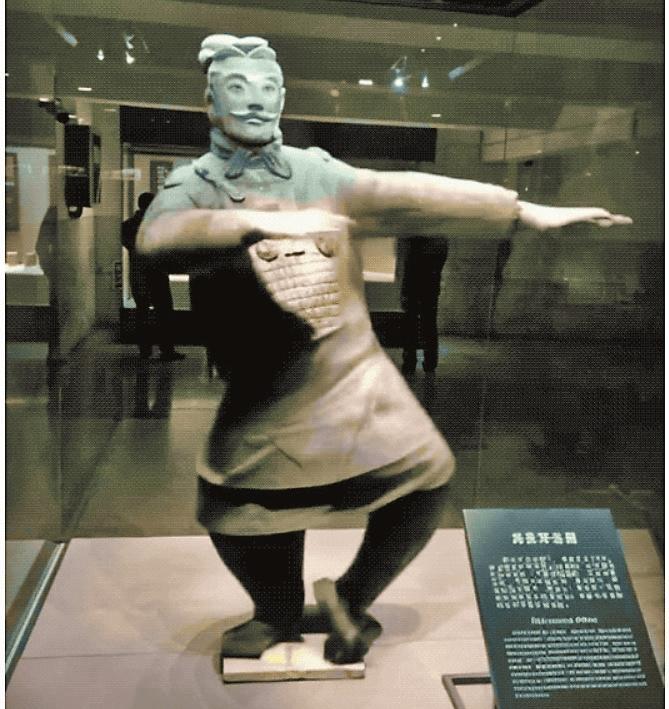
AT the beginning of 2024, a wave of dance events have swept across China’s social media platforms, with various short clips featuring Elon Musk dancing kemusan (a popular swag dance move originated from China) or shuffling Terracotta Warriors in shuffle dance going viral. The video is generated by Alibaba’s ChatGPT-like chatbox, Tongyi Qianwen, which enables users to animate a full-body image they uploaded into 12 dancing styles including kemusan, shuffle dance, bunny dance and gokurakujoudo, and then produce a 10-second video. The animation is based on artificial intelligence (AI) large model developed by Alibaba named “Animate Anyone.” A spokesperson for Alibaba Cloud said that generative AI character has faced numerous technological hurdles, such as image consistency, smooth movements and timing order. And the AI large model developed by the Chinese firm incorporate “an array of innovations” such as using ReferenceNet to replicate facial expression and clothes details, and employing a Poser Guider to ensure the animated movements are precise and controllable. The “Animate Anyone” model was published in November 2023, adding to an array of impressive AI generative video applications developed by both Chinese and foreign enterprises that have been released seamlessly since late last year. In December, U.S. start-up Pika Labs has rolled out Pika 1.0, a highly-anticipated “idea-to-video” model that enables creating videos with AI easier and accessible. In addition to Pika, global tech giants as well as start-ups such as Google, Meta and Runway have unleashed text-to-video AI tools, racing against each other to claim a foothold in what some tech enthusiasts describe as “one of the most trending fields in generative AI.” Industry insiders believed that the year of 2024 will set in motion a new AI race, based on the array of large AI models unveiled last year that are set to see further improvements this year and the mass production of AI chips. “I called 2024 as the year which we will see the widespread application of generative AI models. This year, a ‘killer-level’ application will likely emerge and stun the market,” said Zhou Hongyi, founder and chairman of Chinese tech firm 360 Security Technology. “The fast-lane development of AI large model will bring a new industrial revolution, redefining and shaping virtually every industry in the next three to five years,” Zhou said, predicting that generative AI could be synergized more into social media and short video platforms. He pointed to the rapid expansion of an enterprise-level market for AI large model application in China, which will move “deeper, more industrialized and more vertical” in 2024. In China, it seems like all leading tech companies are betting big on AI. Chinese handset-maker Oppo announced in December that its newly released FindX7 series of cell phones have been equipped with AndesGPT-powered AI capabilities, boasting an impressive 7 billion parameters. One of the innovative functions is “AI call summary,” under which the tool will help users to generate a summary after concluding a call. The company said that the AI model will transform the experience on the OPPO Find X7 series, providing users with “quick response, stronger processing ability and high quality generation on the premise of ensuring privacy and security.” At the Consumer Electronics Show in Las Vegas last week, AI-powered personal computer (AIPC) revolution is taking a center stage. “It is expected that a cohort of electronic manufacturers will hit the market with AIPCs, which lays a solid foundation for the application of AI generation in multiple scenarios,” said Chen Shuxin, senior research manager at IDC China. IDC estimated that the shipment of AIPCs is expected to account for 85% of all PCs in China by 2027, an explosive growth. “The fusion and interaction of AIPCs in different scenarios will speed up,” Chen added, giving example of personalized recommendation, voice and image processing, as well as personal assistant. According to Zhou, many Chinese tech companies including 360 would champion an “all-in AI” strategy. This year 360 plans to further embed its self-developed smart brain AI language large model into all product line-ups. Experts noted that with significant data resources with a large number of Internet users, Chinese emerging AI companies are able to train their AI models. Moreover, the growing research and development capabilities and top-down policy support have enabled Chinese AI startups to make significant breakthroughs. (Global Times) | 
